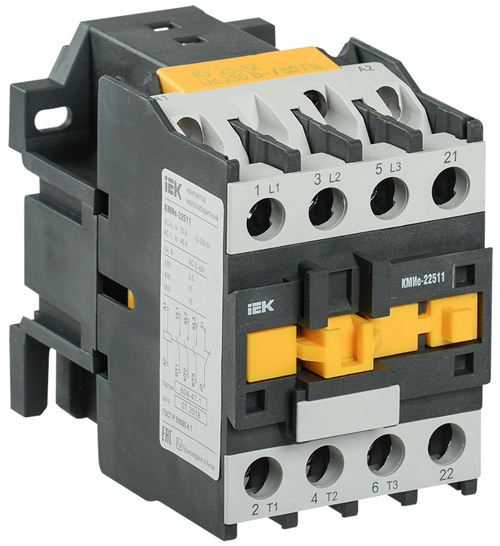From a grid stability point, you can’t produce more than is used, else you get higher frequencies and/or voltages until the automatics shut down. It’s already a somewhat frequent occurence in germany for the grid operator to shut down big solar plants during peak hours because they produce way more power than they can dump (because of low demand or the infrastructure limiting transfer to somewhere else)
Negative prices are the grid operator encouraging more demand so it can balance out the increased production.
Spot on! I hoped this comment would be higher! The main problem isn’t corps not making money, but grid stability due to unreliability of renewables.
To be fair, the original tweet is kinda shit to begin with. They’ve unnecessarily assigned monetary value to a purely engineering (physics?) problem.
The original commenter’s (OC’s) point has nothing to do with renewables’ reliability.
It is entirely to do with generation vs demand. Grid operators could ask other generators like coal, nuclear, hydro, etc. plants to curtail so inverter-based renewables can export power, but that’s not likely because those producers can’t ramp generation up and down as easily.
Grid stability is a problem when you have overcrowding of generation without enough demand on given feeders. This is moreso an issue with the utilities anyways and how they plan their transmission and substation upgrades.
The issue is those coal, nuclear, hydro plants are what produce power when the sun isn’t out. If you consistently shut them down for solar, they will go out of business and there will be no way to provide electricity when solar doesn’t.
Well I wasn’t expecting to find THE right answer in the comments already. Kudos!
And to everyone reading through this post: If you have questions, need more explanations or want to learn more about the options that we have to “stabilize” a renewable energy system and make it long term viable, just ask!
What options do we have to stabilize a renewable energy system and make it long term viable?
Diversify, store and adjust demand.
Diversifying means getting energy from different sources like wind, solar, hydro, geothermal and from different regions as there wind always blows somewhere. This is a major strength of the European grid.
Storage mainly happens in pumped hydro, but for short term storage you can also use batteries and flywheels.
On the demand side, energy intensive industry like steel can draw its energy when there is an glut of energy causing lower prices.
Well, I set myself up for this, didn’t I… 😅 Actually I was kind of hoping for a more specific question, as I would need to respond with a wall of text - and I would like to avoid that as it is kinda rude to force people to read so much and it makes discussion difficult.
So maybe 3 options:
- Wall of text
- You have a more specific question in mind to rephrase
- I try to summarize my wall of text, but I might not get the point across
Lol yes you walked right into that one… Well let me try to meet you half way with some open-ended questions:
-
What does “stabilize” mean in this context, and are the challenges there different than the challenges with non-renewables like fossil fuels?
-
What are the biggest bottlenecks for stabilizing renewables, and how surmountable are they? For example, I’ve heard lots of talk about how large-scale battery networks(…?) are important to smooth out capacity for swingy energy sources like solar and wind (i.e. you gotta make sure the power doesn’t go out at night!), but the materials for batteries (e.g. extractable lithium?) are scarce… Or similar concerns about photovoltaic cells. Is there any merit to those concerns? Or are the bottlenecks elsewhere? Or is there no bottleneck at all but Big Oil is conspiring to keep us on hydrocarbons?
-
As someone with a technical background this is the stupidest problem with solar that I don’t get… just turn off the panels in groups until generation is closer to demand… how have engineers not figured that out. And if they have why does this still get written about.
Someone is an idiot. Maybe it’s me?
I’m adjacent to this problem, so I have a little context, but am not an expert at all.
To my knowledge, we don’t have granular control over panels. So we can shut off legs of a plant, but that’s a lot of power to be moving all at once.
Instead, prices are set to encourage commercial customers to intake more power incrementally. This has a smoother result on the grid, less chance of destabilizing.
A customer like a data center could wait to perform defragmentation or a backup or something until the price of power hits a cheap or negative number.
Thanks that’s helpful.
But right…?
Solar plants can be reduced to rationalize supply.
To my understanding. The bigger issue is you can’t as effectively do this with other non-renewables like coal/gas… so this not a solar problem but a problem of legacy power plants.
So stupid. The narrative as well.
Yea, more control over the panels will help with the overgeneration issue.
But there’s other issues like ramping supply to meet peak demand and general generation during non-solar hours that still have to be addressed.
Each have interesting proposals on how to solve them, but they haven’t been developed to the point that they’re ready to be put onto the grid at a large scale.
I’m in solar/BESS, and I mean more and more DER sites are making use of string inverters which break out arrays into greater chunks than with central inverters. With those, you have more granularity of control where you can drop entire blocks/strings at a time to fall to your curtailed export rate.
You might ask yourself though why DERs can’t just ramp inverter outputs up or down to match curtailment automatically across a whole site. You can absolutely do that, but what happens is your solar or wind resource stays high on the DC or low frequency (LF) AC side, respectively, while power frequency AC is low on the other side of the inverters. This is referred to as DC:AC ratio in the biz, and the higher that ratio, the more losses your inverters experience and less efficient they are. This also puts a huge strain on your inverters and can lessen their operational lifetime.
But really, DERs tie into the grid at distribution level and so they don’t fall under the regulations of FERC & NERC (at least in North America). This means that smaller producers don’t have the same requirements for control as do utility-scale players, so the incentive to control these string inverters at that granular level isn’t there. It’s much easier to just trip the main breaker and wait until the utility gives you the go ahead to turn back on.
I suspect that at lot of producers may want to look into greater control capabilities in the future, but this also depends on inverter OEMs too allowing that control.
But the thing is, you CAN simply turn them off at the press of a button (or an automated script) so its really a complete non issue. As long as big solar installations control systems are accessible by the grid operators, it should be fine.
If you’re spending billions to build a solar plant that has to turn off all the time during peak hours then you’re wasting your money. That seems like a fundamental issue to me, not a non-issue.
Are there any solar plants that cost a billion dollars each?
Secondly, you want to over build solar, so that you have enough capacity during off peak hours. Grid storage is obviously the better solution, but seems not widely available enough yet.
Piggybacking on your grid stability point, another issue I don’t see getting addressed here is ramp rate.
If we install enough solar where 100% of our daytime load is served by solar, that’s great. But what about when the solar starts to drop off later in the day?
A/Cs are still running while the sun is setting, the outside air is still hot. People are also getting home from work, and turning on their A/Cs to cool off the house, flipping on their lights, turning on the oven, etc.
Most grids have their peak power usage after solar has completely dropped off.
The issue then becomes: how can we serve that load? And you could say “just turn on some gas-fired units, at least most of the day was 100% renewable.”
But some gas units take literal hours to turn on. And if you’re 100% renewable during the day, you can’t have those gas units already online.
Grid operators have to leave their gas units online, running as low as they can, while the sun is out. So that when the peak hits, they can ramp up their grid to peak output, without any help from solar.
There are definitely some interesting solutions to this problem, energy storage, load shifting, and energy efficiency, but these are still in development.
People expect the lights to turn on when they flip the switch, and wouldn’t be very happy if that wasn’t the case. Grid operators are unable to provide that currently without dispatchable units.
If we install enough solar where 100% of our daytime load is served by solar, that’s great. But what about when the solar starts to drop off later in the day?
Store the surprus of energy from the solar panels and use that as a buffer with batteries or gravity
But some gas units take literal hours to turn on. And if you’re 100% renewable during the day, you can’t have those gas units already online.
Why not? Just time it and start it hours before, wind energy could help in that too
One solution to what you’re describing is to expand the grid. If your grid stretches half the planet, when the East starts to experience night, the West still experiences day and can ship electricity from renewables to the East to make up for their self curtailment. The same goes for wind where if one location on the planet doesn’t experience wind, odds are another location does and the power can be shuffled around.
Another option is to build out more battery storage such that any clipped energy from solar or wind - that is, the energy that can be generated from your solar or wind resource but that can’t be exported because it would overload your inverters or transformers or exceed your PPA agreement with your utility - is stored and can be exported for 2-4 hours as the sun goes down or wind dies out.
Not a lot of renewables sites are colocated with battery storage, but more and more are.
Yeah yeah down with capitalism rah rah but if the electric company makes no money, how do they afford infrastructure maintenance?
Ok so we nationalize the electric company. Now taxes pay to keep up the electric grid?
I’m down for all of that, by the way. It’s a great solution. But there is absolutely, indisputably, 100% a problem here, and it’s childish to pretend that if evil corporations would stop being so greedy everything would magically fix itself. It’s completely valid to discuss this issue in terms of problems and solutions.
“For years, mankind has yearned to destroy the Sun.” - CM Burns.
The real special bit is that this crap isn’t coming from, say Harvard, who one expects is all about business, but MIT which is supposed to be about Science and Engineering.
The media arm of MIT has been steaming garbage for years and constantly misrepresents the studies from their own researchers for clickbait.
But that aside, even though the engineering work out of MIT is solid, their economic opinions heavily reflect the fact that it’s an institution full of trust fund nepotism.
The grid needs to balance input and output. You can’t just “throw away” power.
It’s a real problem — not the “electric companies are losing money” part, but the “we need to keep the grid balanced” part.
That can indeed be a problem.
It is however not what the MIT guys wrote as being the problem: they quite literally said the problem with too much solar generation at peak times is that it drives prices down.
Also, curiously, the prices being driven down actually helps with the real technical problem that you point out: those consumers who can move their consumption times will tend to move them to those hours when the prices are lowest thus helping solve it. Same thing goes for investors: the more the price is pushed down at peak solar production times, the more appealing it is to invest in things like storage or even solutions with lower efficiency (such as green hydrogen or electricity transportation cables to markets less well served by solar).
The low prices aren’t the problem from a technical point of view, quite the contrary: they’re an incentive to invest in solutions (which is going to employ a lot of techies, so supposedly MIT would be all in favor of it)
This is a real problem for renewables.
You don’t get paid when the sun shines, and you don’t get paid for when it does not.
You had to pay for building the solar panels and maintaining them. Corporate greed aside none sane would like their tax money either to be spent on producing electricity when it’s not needed.
Next step for renewables must be storage that is cheap enough for it to beat having fossil fuel on standby.
Corporate greed aside none sane would like their tax money either to be spent on producing electricity when it’s not needed.
You need to set the corporate greed aside in your own mind, too (not saying you’re greedy, saying you’ve been indoctrinated to only see life in capitalist terms). Stop thinking in “cost” or “profit”, start thinking in “benefit” and “use”. Producing electricity when it isn’t needed is only a problem when someone is looking to make money off of it.
Producing electricity when it isn’t being used is problematic for the grid. So is producing too little.
Producing electricity when it isn’t needed is only a problem when someone is looking to make money off of it.
I never said it should be. There are plenty of ways to regulate electricity production, storage, and even usage, they just aren’t considered “profitable” so are dismissed, overlooked, and or deliberately smeared and destroyed because they threaten those whose profits they would hurt.
In this thread: a bunch of armchair energy scientists who think they’ve solved the energy storage problem all on their own.
Theres tons of ways that people with even a little brains could figure out, the problem is often cost or feasability.
A big burried water tank in my yard could be heated during the day and used to warm the house via underfloor heating at night, could do the reverse with chilled water in the middle of summer plumbed to an air recirculator with a heat exchanger. Its really simple engineering but expensive to implement.
I think an awful lot of people just dont understand the sheer scale of a lot of these problems, not the fundamentals.
It’s always economics.
There’s a joke I’ve heard that says something like anybody can build a bridge that stands, but it takes an engineer to build one that just barely stands (i.e., one where the materials and labor actually cost money).
That also reminds me of my first router - it was my PC. 10x the cost and 1/10 the features of a purpose built router, but I already had the computer and just needed to provide internet to 1 or 2 more via Ethernet.
Likewise, it’s easy to design energy storage concepts of all kinds. It’s a lot more tricky if you want it to be economically viable and see mass adoption.
of course it’s a furry shitposting about it.
They aren’t wrong though, storage technology is only starting to come to market in significant enough capacity to be beneficial.
And for storage plants to be financially viable energy costs during the day need to be really cheap, so they can raise them at night and make a significant enough profit to break even.
2 giant lakes. 1 uphill from the other, or one underground. When there’s excess energy you pump water uphill. When you need more you let it back down
yeah, good luck with that one though. it tends to be ecologically problematic, and very, very hard to find places good for this. It has happened, but you can’t just build these things as demand desires.
This is why battery based and thermal based energy storage is taking quite the aggressive focus on research and development right now. Batteries are more of a side effect, and very easily accessible, and thermal storage is probably a lot less popular than it should be.
Generally you can do a similar thing with traditional hydro anyway, plus it produces a base level of power anyway.
You’re telling me we can’t dig big holes and use them? What about using old mines and quarries?
Is it a problem that they can’t find anything, or just that it would be a bit expensive and they would rather use batteries as an excuse to keep using oil?
you could, theoretically. You cold also create man made natural lakes in places where it’s convenient, but again, you need the rough shape of a lake high up, and the rough shape of a lake near enough, and lower to the other lake, that you can generate significant amounts of power.
You might be able to use an old quarry, most old quarries are flooded anyway, but idk of many quarries that exist near the base of a mountain with the ability to have a higher elevation storage pond. Most quarries are probably going to be pretty close to ground on account of being a quarry, so that doesn’t really help much. You could also use a mine, but the problem there is going to be getting water out of it trivially. It’s just not really conducive to that use case.
Another big problem is going to be pollution to the water supply, especially in something like a quarry or mine. That’s a non improbable issue.
Ok so TL;DR here, is that you need an incredibly rare formation of geological features, and the ability to use them. If you’ve ever played minecraft you can think of it like finding a 3x3 formation of bedrock on the top layer of bedrock in the overworld. If not you can think of it like staring at a TV displaying static waiting for it to suddenly emerge an image that isn’t just indecipherable noise. Or better yet, the monkey on a type writer example, given enough time, it will produce the entire works of shakespeare.
It’s theoretically possible, but practically, when possible, it’s probably already been done, and if it hasn’t there’s probably a good reason for it.
If you’re analyzing this from a mathematical perspective, the problem here is not finding two lakes, or finding two lakes at different elevation levels, it’s finding two lakes, at different elevation levels, sufficiently close enough to be practically uesful for pumped hydro.
The reason why we’re using batteries right now, as i’ve said is partially two fold, it’s a lot simpler, you can invest the majority of your capital into an energy storage medium, the remainder is for infrastructure, land, buildings, power equipment, which makes it a very low risk investment. The second primary reason is simply accessibility. Chemical batteries are simply the most prevalent, cheapest, and most accessible form of energy storage right now. They work anywhere, they can be built to any scale, they work no matter what time of day it is, or what time of year it is. They literally just work.
If you’re trying to do something like pumped hydro you’re going to need a massive, multi billion, possibly hundreds of billions of dollars of capital, probably close to about a decade of construction, and only then after the construction can you start it up and start to generate power.
With a battery storage system, once it’s built and approved for use, it can immediately start providing power storage. And for the cost of a few million, to a few hundred million. And again it scales basically infinitely.
There are also a few other problems, Digging a big hole and filling it with water while it sounds simple is more challenging than it would seem. You need a geologically suitable area for it, and at this point you’re probably going to be flooding a dammed mountainous area anyway, so it’s probably redundant. There are earth fill embankment dams, however they have issues with subsidence for example, and that tends to be rather spooky. You would experience a similar issue here, the only difference is that it’s below ground, instead of above. What do you do with the removed material? What do you do if you’re in an area with a lot of bedrock? You’ve basically just created a quarry now.
Sounds like quitter talk
shit man you got me, fuck it lets blow up a nuke in a mountain to create a pumped hydro plant.
Every time someone mentions “oh no solar is producing too much energy” I think of this deranged Forbes article from a few years back.

alt-text
Microsofts billionaire founder Bill Gates is financially backing the development of sun dimming technology that would potentially…{blahblah global cooling}
This is obviously in the context of attempting to mitigate global warming, which was caused by… you guessed it, mostly fossil fuel use.
Nobody is proposing blocking out the sun like Mr. Burns. More like reflecting a tiny percentage of solar radiation to prevent our oceans from boiling or once-in-a-century superstorms that, oh I don’t know, flood the mountains of Tennessee from becoming yearly occurrences.
This sounds like the start of a sci-fi apocalypse novel
Or Highlander 2 lol (don’t watch it, it’s horrible)
Or the Neal Stephenson Novel “Termination Shock” where rogue Billionaires shoot elemental sulfur into the upper atmosphere and it works and nothing bad happens because of it.
Reading the novel I was always waiting for basic chemistry to catch up to them (There are a few reactions going Sulfur + Ozone + UV Light > acid rain/ heat trapping isolation layer/ all sorts of cool stuff) and it was a disappointmet to me this was never discussed. I expected more from Stephenson. This book read more like a hazeography of the trillionaires club.
it’s long past time we took businessman out of control and replaced them with scientists.
In which case they would choose Nuclear over Solar 9/10 times. I’m onboard
So what they are saying is that our current financial system is too focused on short term gains to cope with short term losses?
Sigh, when I grew up, I was allways taught to save money so that I have a buffer to fall back on. This concept seems to have completely gone out the window for busniesses lately.
I dislike the talk about how capitalism is bad as a general concept, but when seeing stuff like this I do agree with it in parts.
Ok, so let’s solve the issue.
There is too much electricity, so generating power to transmit to the network will cost us money.
This has an easy solution, just don’t transmit it to the network.
Build a battery facility where you store the power instead, infact if the price of electricity is negative, use the power on the grid and charge your batteries as well, I mean, when the electricity cost is negative, you are being paid to consume power.
Then when the sun goes down, and the electricity price goes up, you sell the charge you have in the batteries.
Depending on your location you could even set up a pumped storage system, where instead of batteries getting charged, you use the cheap excess energy to pump a resarvoir full of water, and release it when you need the power.
That’s really not an easy solution at all. It’s simple, conceptually, but it’s a huge series of projects. And expensive.
I know that, but with long term planning its fine.
Scientists: Hi here is a physical, technical, materially real limitation of most renewables that most of you should know about by now.
Shitforbrains shitter leftie: must be capitalism
If the technical limitation is “it drives down prices” then it is about capitalism, yes.
How do you even manage to not get that?
The “problem” of negative energy costs is easy to solve, but quite costly.
Build water desalination/carbon capture and storage/hydrogen generation plants that only run when the price goes below 0; even though these are very energy intensive, they would help stabilize the grid.
Then build more solar; you want to try to have the daytime price stay in the negative as often as possible.
you want to try to have the daytime price stay in the negative as often as possible.
That’s not exactly conducive towards people building more solar.
The solar isn’t the goal; the energy is enabling the value in other parts of the economy.
In fact; energy supply is so important to the reasonable functioning of the economy. It should be taken out of the profit driven cycle of business.
Look at what happened with WPI in Ohakune and PanPack when energy prices sky rocketed a few months back.
That’s not at all what MIT is talking about here. This goes into detail around the challenges tied in rolling out grid scale solar in a way that aligns with supply and demand curves, and how to make sure we’re able to capture overproduction so that we can use it when not enough is being produced. It’s a complex shift to work out in our over 100+ year grid production structure, and has been an ongoing discussion across the energy sector. But you know…memes and shit.
You’re not saying anything contradictory to the criticism, You’re saying the exact same shit with a more expensive vocabulary. I’m also very educated. I also agree the sun is Monty Burns greatest enemy for giving out free light.
Literal free goddamn energy from the sky and these greedy fucks are going to burn the world down because they can’t flip it for a buck
you know we could just put our collective foot down and take the power away from them.
It sounds dumb, but because you can’t turn off solar power, if it produces more then you need, you have to use it somehow or it can damage equipment. Hence the driving prices into negative territory. It’s a technical problem more than it is a financial one.
It is a technical problem of how can you convince electrical companies to overcome a problem they have no financial incentive to solve.
It is a financial problem. Technically you can just cover the solar panels. But that’s not good financially.
Your “technically you can” is actually a huge logistical nightmare to implement.
Having electricity rates go really low is intended to incentivize people or companies to sink the excess energy to wherever they can. And also to discourage producers to produce more at that hour, if they are able to.
Really? I’m seriously asking, because I thought solar farms already had automated ways of cleaning off the panels, surely an automated way to cover the panels wouldn’t be any more complex than that. It would add maintenance costs for sure, but calling it a logistical nightmare seems like an exaggeration.
Most use a horizontal single axis configuration and could just tilt the panels away from the sun.
The real question that we should be asking, is why nobody can think of what to do with free energy?
Desalination? Mine Bitcoin? Giant space laser?
It’s not a question of ideas, it’s a question of money. Building things to use excess power costs a lot of money.
In some markets, the power price actually goes negative and consumers can be paid to use energy.
https://edition.cnn.com/2024/09/20/energy/three-mile-island-microsoft-ai/index.html
I think there’s plenty of money out there to use excess power, someone just has to connect the dots…
Or in a pinch: just run big-ass space heaters. Seriously. It’s a stupid way to burn off excess power, but it’s dirt simple and cheap. Just have a big array of resistive heaters out in an empty field somewhere with a high fence around it. Need to burn off an extra GW? Run it through massive heating elements and burn burn it off. It’s a stupid waste of good energy, but as an emergency backup, it’s not a bad option. It’s trivially easy to dispose of huge amounts of excess electricity if you just run the mother-of-all space heaters. Run your stupid giant resistive heater at the bottom of a lake for even better effect.
Sounds like energy companies or independent entities should invest in energy storage so they can get paid to draw from the grid.
But then you’ve got cities like Morro Bay, CA that are trying to stop a plan to replace a coal plant with a battery storage facility because batteries are supposedly dangerous.
Gotta love any time anybody argues against replacing coal with something else, and the tactic is to spread FUD about the thing that is NOT coal!
This is idiotic. The fact is your electricity transmission system operator has to pay a lot of money to keep the grid stable at 50 or 60Hz or your electronics would fry. With wind and especially with solar power, the variable output is always pushing the frequency one way or the other, and that creates a great need for costly balancing services. Negative pricing is an example of such a balancing service. Sounds good, but for how long do you think your electricity company can keep on paying you to consume power?
With wind and especially with solar power, the variable output is always pushing the frequency one way or the other, and that creates a great need for costly balancing services.
Speaking as a flashlight enthusiast…there’s many different ways to get a constant and consistent current. Sure we’d need to scale it up from a pocket-sized device to a whole fucking power grid, but with a big enough driver with the right arrangement of capacitors and all that, you’d easily be able to get a totally consistent current out of wind or solar
pay a lot of money to keep the grid stable at 50 or 60Hz or your electronics would fry
Absolutely not. Please don’t make things up.
People also don’t realize that too much power is just as bad as too little, worse in fact. There’s always useful power sinks: pumped hydro, batteries, thermal storage, but these are not infinite.
Stupid question but can we not like, make toggleable solar panels? Like if I Just pull the plug extracting power from a solar panel does it explode or break or something?
Not really. You can discharge into the ground, but for large installations even the ground has a limited (local) capacity.
Edit: explain yourselves, downvoting cowards
I have no idea what i am talking about… But what would happen if you pulled a black tarp over the panel? Could even be automatic like the blends on a building. And even partial.
That’s extremely expensive and not really scaleable.
You’re telling me a toggleable panel that flips when it needs to is too expensive? You’re already installing the panels. You’re already doing all that. The only difference is the material on the back side of the panel and of course some sort of crank and shaft to rotate it.
Or if only there was some sort of powered component that could rotate it when it reached the capacity you know since the name of the game is power
In addition to what allero said, you seem to only be considering future installations rather than existing ones. Retrofitting existing equipment is massively more expensive than changing a design prior to building it.
- Unplug solar panel array
- Less electricity being generated
- …
- Profit (for the power company)
My understanding is that most large solar arrays don’t have this capability in any sort of automatic way, and at these levels of power it’s a bit more complicated than “just unplug it”.
most large solar arrays don’t have this capability in any sort of automatic way
Look at this “manual” unplugger:

and at these levels of power it’s a bit more complicated than “just unplug it”.
Unplug many.
“Everything is so fucking simple that I can easily figure out the solutions to giant societal problems with 15 minutes of googling” is the dumbest take I’ve heard all day. Granted it’s only 6am but still.
Maybe you’re not fucking Sun Tzu, Einstein and Jesus rolled in to one and there might be the occasional issue that’s slightly more complicated than your armchair quarterback solutions.
Christ you people piss me off.









